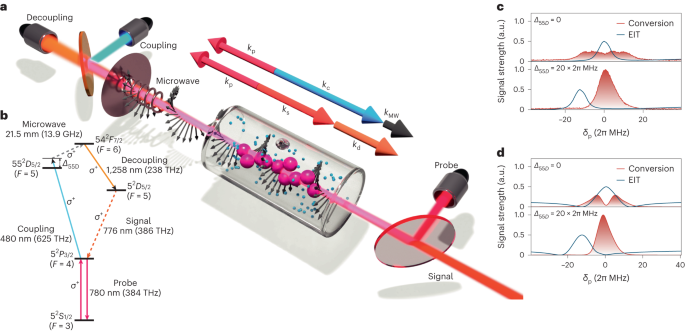Phys.org October 5, 2023
The coupling of microwave and optical systems presents a challenge due to the natural incompatibility of energies, but potential applications range from optical interconnects for quantum computers to next-generation quantum microwave sensors, detectors, and coherent imagers. Emerging platforms are constrained by specific conditions. An international team of researchers (Poland, Denmark) designed a set-up using Rydberg atoms that allows wideband coupling of optical and microwave photons at room temperature. They demonstrated continuous-wave conversion of a 13.9 GHz field to a near-infrared optical signal using an ensemble of Rydberg atoms via a free-space six-wave mixing process designed to minimize noise interference from any nearby frequencies. The Rydberg photonic converter has a conversion dynamic range of 57 dB and a wide conversion bandwidth of 16 MHz. They demonstrated the readout of photons of free-space 300 K thermal background radiation and observed Hanbury Brown and Twiss interference of microwave photons… read more. Open Access TECHNICAL ARTICLE

Room-temperature MW-to-optical converter. Credit: Nature Photonics, (2023)